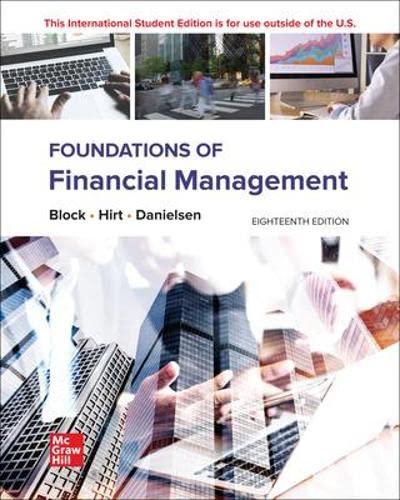Integrative - Risk and Valuation. Hamlin Steel Company wishes to determine the value of Craft Foundry, a firm that it is considering acquiring for cash. Hamlin wishes to determine the applicable discount rate to use as an input to the constant-growth valuation model. Craft's stock is not publicly traded. After studying the required returns of firms similar to Craft that are publicly traded, Hamlin believes that an appropriate risk premium on Craft stock is about 7%. The risk-free rate is currently 5%. Craft's dividend per share for each of the past 6 years is shown in the following table: a. Given that Craft is expected to pay a dividend of $3.43 next year, determine the maximum cash price that Hamlin should pay for each share of Craft. (Hint Round the growth rate to the nearest whole percent.) b. Describe the effect on the resulting value of Craft from: (1) A decrease in its dividend growth rate of 2% from that exhibited over the 2017-2022 period (2) A decrease in its risk premium to 6%. a. The required return on Craft's stock is \%. (Round to the nearest whole percentage.) The maximum cash price that Hamlin should pay for each share of Craft is (Round to the nearest cent.) b. (1) If the dividend growth rate decreases by 2%, the maximum cash price that Hamlin should pay for each share of Craft is s (Round to the nearest cent) (2) If the risk premium decreases to 6%, the required return on Craft's stock is %. (Round to the nearest whole percentage) With a 11% required return, the maximum cash price that Hamlin should pay for each share of Craft is $ (Round to the nearest cent.) Price is a function of the current dividend, , and the risk-free rate, and the company-specific For Craft, the lowering of the dividend growth rate future cash flows resulting in in share price. The decrease in the risk premium reflected in risk leading to in share price. (Select the best answers from the drop-down menus.) Integrative - Risk and Valuation. Hamlin Steel Company wishes to determine the value of Craft Foundry, a firm that it is considering acquiring for cash. Hamlin wishes to determine the applicable discount rate to use as an input to the constant-growth valuation model. Craft's stock is not publicly traded. After studying the required returns of firms similar to Craft that are publicly traded, Hamlin believes that an appropriate risk premium on Craft stock is about 7%. The risk-free rate is currently 5%. Craft's dividend per share for each of the past 6 years is shown in the following table: a. Given that Craft is expected to pay a dividend of $3.43 next year, determine the maximum cash price that Hamlin should pay for each share of Craft. (Hint Round the growth rate to the nearest whole percent.) b. Describe the effect on the resulting value of Craft from: (1) A decrease in its dividend growth rate of 2% from that exhibited over the 2017-2022 period (2) A decrease in its risk premium to 6%. a. The required return on Craft's stock is \%. (Round to the nearest whole percentage.) The maximum cash price that Hamlin should pay for each share of Craft is (Round to the nearest cent.) b. (1) If the dividend growth rate decreases by 2%, the maximum cash price that Hamlin should pay for each share of Craft is s (Round to the nearest cent) (2) If the risk premium decreases to 6%, the required return on Craft's stock is %. (Round to the nearest whole percentage) With a 11% required return, the maximum cash price that Hamlin should pay for each share of Craft is $ (Round to the nearest cent.) Price is a function of the current dividend, , and the risk-free rate, and the company-specific For Craft, the lowering of the dividend growth rate future cash flows resulting in in share price. The decrease in the risk premium reflected in risk leading to in share price. (Select the best answers from the drop-down menus.)







